Sometime around 2002, when I was 13 or 14, I was a pudgy and awkward kid growing up in western Massachusetts. I remember being with my Mom, staring at the TV. I think she was making dinner, as was the woman on screen. She had a raspy voice, one that struck me even then as being rather approachable. This was someone breaking down the wall between host and viewer. I remember her making everything in front of the camera. Nothing magically appeared from the oven perfectly done. She made a meal in 30 minutes, just as my Mom was trying to do. As memories go, it’s admittedly inconsequential, but it’s stuck with me, reminding me of people I knew, and those moments before dinner and all the usual elements of comfort one associates with simple, honest cooking.
Ten years later, I moved to New York to start my career, and food TV was actually something I cared about, first as an insomnia remedy, but it soon became a favored evening pastime. Amid the Emerils, Marthas, and Inas, there was a documentary on Netflix called Jiro Dreams of Sushi. The film profiles the family behind the three-Michelin star Japanese restaurant Sukiyabashi Jiro. It was a film about food, yet there was so much more to it: It told a story about family, success, failure, and Japanese culture. It was both captivating and beautiful–and you couldn’t help but project your own familial neuroses into it, which is a benchmark of a good film.
These two seemingly disparate memories should have as much in common as gas-station California rolls and a perfect piece of toro cut from a tuna that was purchased from the Tsukiji fish market hours earlier. Yet Rachael Ray and Jiro exist together not only in my memories, but also in a continuum of food television and the role it plays in viewers’ lives. They also represent a changing of the guard from Food Network, which helped define a generation of programming and stars with its, dare we say, innovative shows—think Good Eats, The Iron Chef, Ray’s 30 Minute Meals, and A Cook’s Tour, starring a youngish journeyman chef named Anthony Bourdain, all of which debuted on its network between 1999 and 2002.
Today, it’s Netflix that has a growing global appetite to feed its audience a new type of food TV. Such shows as Ugly Delicious, Nailed It!, The Final Table, Somebody Feed Phil, and Salt Fat Acid Heat represent a booming subsection within the service and have revived interest in the genre among a generation of Instagram-happy culinary adventurers for whom Bourdain is their Proustian comfort-food viewing.
After some festival buzz and a brief arthouse theatrical run, Jiro debuted on Netflix in the late summer of 2012, about six months before the streaming service’s originals strategy formally kicked off with House of Cards. At the time, Netflix had approximately 30 million subscribers, barely more than a fifth of its current total. Regardless, the documentary became a phenomenon, an early signal of not only Netflix’s power to spark a cultural moment and alter the fortunes of its stars, but also a harbinger of how it finds an opening into a warhorse television format and seeks to create its own alternate reality of the form. “Because we have incredible freedom [at Netflix], it’s incumbent upon us to continue to do things that can’t be done in other places,” says Lisa Nishimura, Netflix’s VP of content acquisition. “That’s the opportunity.”
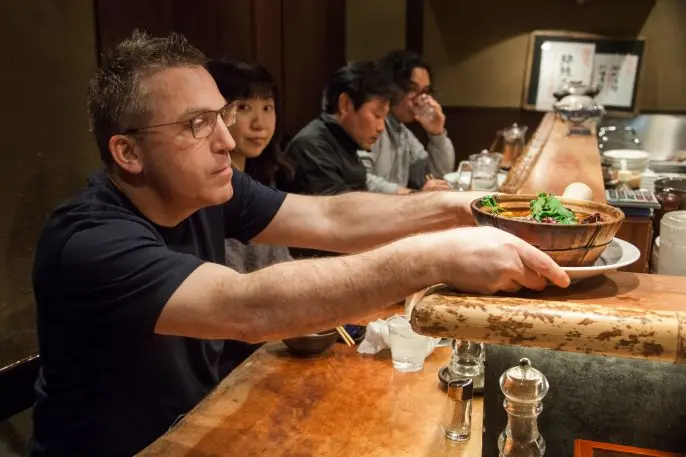
A seat at the table
When Nishimura, who speaks with both crisp authority about her work and the unbridled enthusiasm of a bona fide film buff, first watched Jiro, she was piqued by its expansiveness. “It was really just a story of the pursuit of passion and craft,” she says. Not long after, Nishimura, who had joined the company in 2007, took on the responsibility of building out an original documentary programming roster–and Jiro director David Gelb was at the top of her list of people to speak with.
“David came in and he had conceived of this idea,” she says. He wanted to produce an episodic documentary profiling a handful of culinary titans, hailing from New York to New Zealand, from Italy to isolated Jarpen, Sweden. Each show would feature one chef and there would be interviews, but it would also depict a more complete tableau of this person’s life and how it informed their artistry. “We were a little blown away in the room,” Nishimura tells me, “because it’s our dream scenario where you have an auteur director come in with a vision that’s incredibly clear.”
The result was Chef’s Table, which debuted in April 2015 and whose sixth season debuted on February 22. It quickly became one of Netflix’s signature programs, in part because of how clear and precise a show it is. Where previous food programming relayed kitchen how-tos or offered up hackneyed panoramic shots of foreign cityscapes, Gelb’s show was intimate and focused. It treated food not as the subject but rather the canvas. Blue Hill’s Dan Barber and Osteria Francescana’s Massimo Bottura are filmed in their natural habitat, behind stainless steel benches where they cook. They talk to–and sometimes scold–staff, while describing the theory behind a certain dish’s execution. All of it is presented without narration. The chefs tell their own stories, either via interviews or filmed conversations, while a staccato orchestral soundtrack syncopates their every move. “It aligned with the goals of the [documentary] initiative here,” Nishimura says, “which was to present nonfiction stories in a completely fresh, elevated, and immersive way.”
“That show showed there was an appetite for this kind of high-end programming,” says Morgan Neville, director of Won’t You Be My Neighbor? and the Oscar-winning 20 Feet from Stardom, and a director and executive producer on David Chang’s Ugly Delicious. “There was no market. Nobody was doing it because nobody was buying it.”
Chef’s Table was different, it stood out, and no one had presented chefs in quite this way before. This is both the show’s genius and its fundamental flaw. The presentation is so grand and over the top in its celebration of these artistes that it loses that measure of distance that comes when documentarians wrestle with their subjects.
But you know who’s never going to complain about this? Chefs! Nishimura even quasi-owns up to the genre’s blossoming self-indulgence when she refers to the industry joke that if a chef could choose any other profession, they likely would; the reason chefs cook usually isn’t because the money’s good (it’s not)–it’s because of some bizarre amalgam of self-worth and emotions, which shows like Chef’s Table only magnify and somehow make seem heroic. (Nishimura adds that Gelb is working on an offshoot of Chef’s Table–one that focuses less on hoity-toity fine dining and instead on the “more accessible corners of the world.”)
She also swears that she’s never had an overarching strategy for building out a slate of food programming off the success of Chef’s Table, but the show did just so happen to perform two fundamental imperatives for Netflix moving forward: One, chefs knew that the company wanted to make them look good, and two, Netflix had an international perspective–and increasingly a worldwide audience–that could turn restaurants into destinations and the chefs into global brands. “The effect that shows like Chef’s Table have had [is clear],” says journalist, editor, and Ugly Delicious cocreator Peter Meehan. It proved that “people can aspire to do more” when it comes to food programming. There’s also the fact that it’s now trendy to get a series, no matter if you’re in the television industry or not. “Everybody wants a Netflix show. Nobody doesn’t want a Netflix show.”
As Nishimura admits, the success of the program meant that nearly every subsequent pitch was for “the Chef’s Table of X.” That, to her, was a real metric of industry success. Despite Netflix’s best efforts to fend off that kind of reductive programming, Chef’s Table begat a spin-off devoted just to France, as well as The Mind of a Chef, a Michael Pollan series called Cooked, and Ugly Delicious. Whether it was intelligent design or evolution, the classy food-porn genre was born. Food with a capital F–Cordon Bleu-trained hands grasping Le Creuset pans–became the binge du jour.
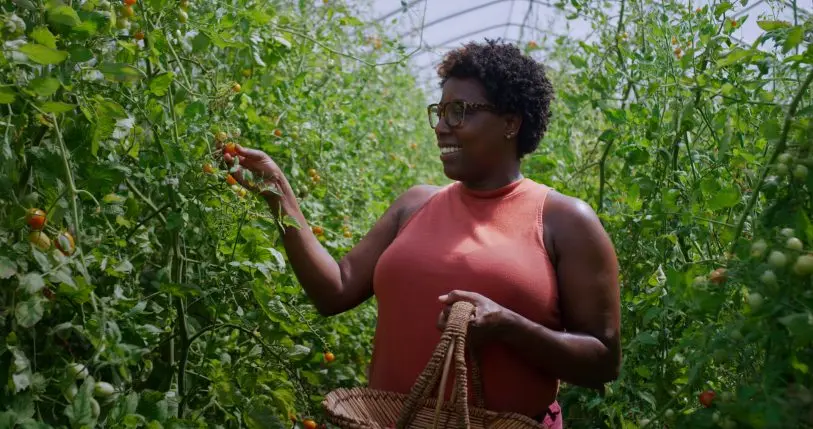
Talent seeking
Nishimura’s dictate has not only been to make something from nothing, but Netflix has also been voracious in acquiring concepts that worked elsewhere and met her mission to air stuff that felt different from standard fare. Five months after Chef’s Table showed up on Netflix in 2015, PBS premiered I’ll Have What Phil’s Having, starring Everybody Loves Raymond cocreator Phil Rosenthal traveling to various locales with the kind of zest for life one has when graced with 1990s network-TV fuck-you money after making the most successful sitcom of the last 25 years. Rosenthal can do whatever he wants–and so he eats the finest food on earth.
It’s unlikely Phil’s was directly influenced by Chef’s Table, but it nonetheless represents the next phase in Netflix’s food programming, which is wild, because at first glance, this show should be really bad. What do I care about the blessed life of the behind-the-scenes guy from Raymond? A grown man is calling his parents in every episode describing what he just did, and he does not stint on the dad jokes.
Yet here are six episodes of TV in which there’s such care put into the production, and Rosenthal is nothing if not genuine. His excitement is so palpable it’s right there on his face. He travels the world with literally the widest eyes a camera has ever seen. His common touch is infectious, and damn, he can deliver a TV moment.
One specific scene from the PBS show stands out. In the second episode, Rosenthal is in Italy at a picnic outside chef Nancy Silverton’s Umbrian chateau–you know, the sort of thing we all get to experience every day. Silverton (who would later get the Chef’s Table treatment in season three, which debuted in February 2017) had invited her friend, a massive bull-like Italian butcher, to prepare the meat. Rosenthal and the butcher cook next to each other at an open-flamed grill. The language barrier requires them to communicate mostly with monosyllabic words as well as groans, murmurs, and physical touches. The butcher takes a piece of steak, bigger than any I’ve ever seen, and instructs Rosenthal to eat it with his bare hands. He obliges, biting into it to reveal the uncooked pink center.
Then, something changes. Rosenthal decides that this moment isn’t just about him and his new Italian friend. The butcher takes the steak and (literally) throws it to the crew. The camera zooms out and this deeply personal moment between two men becomes something larger and more communal. The crew–grips, camera operators, everyone–pass around the hulking cut of beef and tear into it with their teeth, blood and juices streaming from their mouth. Everyone is smiling. Rosenthal is teary-eyed. (He is always teary-eyed.) But I, too, am smiling and teary-eyed. (I am not always teary-eyed.)
The person behind that moment is Chris Collins, whose name may not be familiar, but any fan of the vanguard of food TV in the last two decades knows his work. He’s the founder of Zero Point Zero productions and the executive producer of Anthony Bourdain’s three food travelogue series. As Bourdain’s journey from Food Network to Travel Channel to CNN proves, this kind of unscripted television has struggled to find a good home. “If you think about food television going back 15 to 20 years,” Collins says, “you have PBS and then you have Food Network.” Neither, he says, is known for variety within its food-related programs. “You find something that works, and then you continue to expand off that and stay in that lane.”
So when Nishimura started to conceptualize Netflix’s foray into new documentary food content, Collins and Rosenthal–who only made six episodes of Phil’s–presented a great opportunity. Here was a lovable mensch who could set a breezy, unfussy tone for this subgenre in the same way Chef’s Table presented a varnished, reverential one. Somebody Feed Phil debuted in January 2018 on Netflix, with 12 episodes, a Comedians in Cars Getting Coffee if the comics were obsessed with tacos al pastor. The Netflix version, I’ll admit, isn’t quite the same. The formula mimics its predecessor, so perhaps it’s because I know the form already. Or maybe it’s just that novelty has worn off. Rosenthal, however, is still clearly very enthusiastic about food.
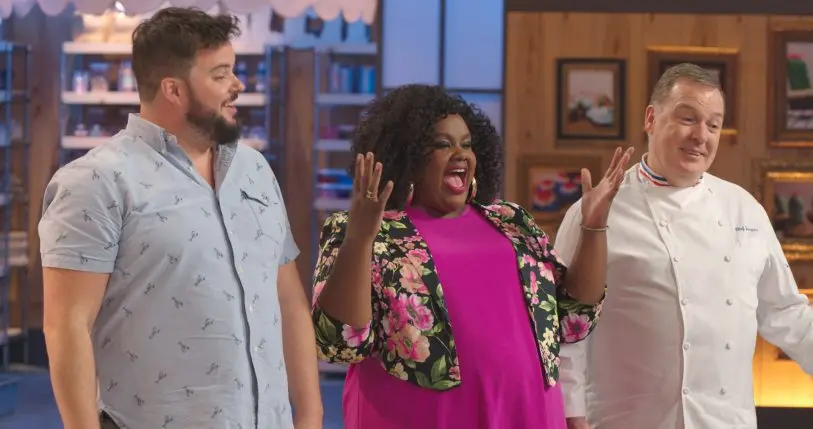
Reality bites
As these documentary-style food shows started to gather momentum on Netflix, the company knew that it wanted to add unscripted programs into the mix. In October 2016, it hired Bela Bajaria, a former Universal TV exec, to license and develop them.
Bajaria’s creative brief is no different than Nishimura’s: Find the unexpected. But she had no real base to start from, the way that her documentary counterpart did. So she did what Netflix and its massive content budget affords: Bajaria both sought fresh pitches from the best in the unscripted world, while also buying the best that was already out there and making it her own. A great example of this is The Great British Bake Off–the cult show, which first came to the U.S. via PBS and has recently moved to Netflix (and is known here as The Great British Baking Show). While it may seem like a For Britain by Britain (FBBB) kind of experience, its U.S. viewers are ravenous (hi, hello, that’s me). Bizarrely, in the short time it’s been on Netflix, it’s already melded into the platform and feels very much like a natural part of the slate, not unlike how people believe You or The Good Place originated on Netflix.
In other words, Bajaria had nailed it.
No, really: In her quest to find a reality competition show with a “unique perspective” that offered “a twist on a format but has its own fresh take,” she green-lit Nailed It!, the baking competition show where all the contestants are destined to fail. The show takes the Food Network’s omnipresent Cupcake Wars-style schedule filler and altered its perspective, challenging middling home cooks (that is an understatement) to create baked masterpieces with a minute’s notice. To host, she paired celebrity pastry chef Jacques Torres with comedian Nicole Byer, who make the loveliest pair. “We wanted to lean in to [comedy],” she says. I binged the entire first season over the course of two nights, marveling at how they manage to make the show lighthearted and human rather than gratuitously mean.
It was one of Netflix’s first attempts with baking, and Bajaria has already put on two more seasons as well as created a Mexican version of the show. This rapid proliferation is an apt instance of how Netflix uses data to inform its content: The show did very well internationally, but the company saw a specifically keen audience in Mexico. So they decided to produce an iteration just for them.
Expanding out slightly, Bajaria has gone further in tackling the Bravo-saturated reality space, complete with the successful revival of Queer Eye, which is not a food show but did give the world my favorite silly conspiracy story of 2018–that food and wine expert Antoni Porowski is secretly not a chef because we never saw him, you know, cooking. “We definitely follow buzz,” Bajaria says, and then cites book sales, Instagram followers, and product lift of her talent. “All of these things are clearly connected–in terms of viewers building community and cultural zeitgeist.” Queer Eye is about to air its third season after its successful February 2018 debut, and while it helped pave the way for last month’s Marie Kondo takeover, now the Queer Eye crew is also heading to Japan.
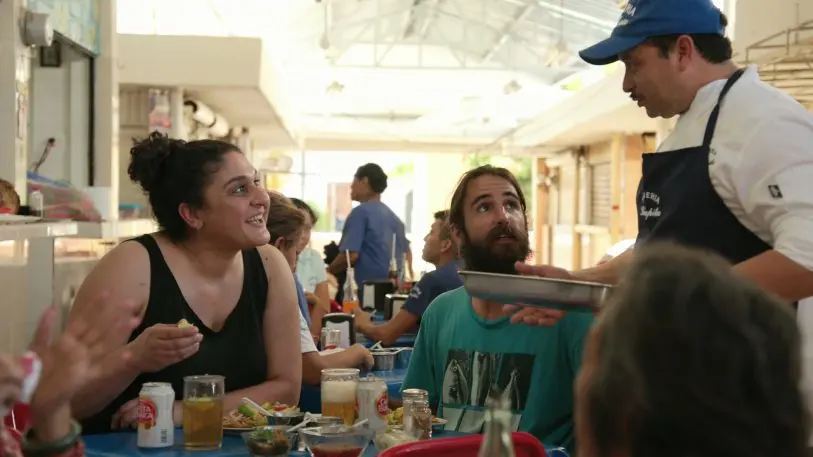
The elements of style
Samin Nosrat admits she doesn’t exactly know how Netflix makes its programming decisions, and in a way, her presence on the network is proof of that. The Iranian-American cook and writer of the 2017 best-selling cookbook Salt, Fat, Acid, Heat is perhaps best thought of as whom you’d find only if you were conducting a very creative search for an Alton Brown type in 2019. Although she does not bring Brown’s filmmaking tricks to her presentation style, she’s a similarly gifted explainer, elucidating the fundamentals of cooking in a warm and informative way, but also with the kind of international perspective a TV service that operates in 190 countries would want. Even talking on the phone with Nosrat is the same as watching her show: Her verbal demeanor entrances you and makes you comfortable; you both giggle uncontrollably about God knows what while it slowly becomes clear she is thinking eons ahead of you. Nosrat knows she’s good at what she does, but she also admits that she’s “a dork that got an opportunity. I don’t fit into that classic look.”
Nosrat’s show, which shares the name of her book and debuted last October, is not a travel show like Somebody Feed Phil or Ugly Delicious, but it visits some truly amazing destinations to which I now absolutely need to go. It combines elements of the documentary style with aspects of the unscripted reality genre to create a new kind of instructional show, which is the third element of my General Theory of Food Television. Going back to Julia Child on public television, there have been people on TV who are there to teach you how to cook. Salt Fat is not “dump and stir” TV, as the classic how-to programs are derisively known in the business, but Nosrat does a bunch of cooking on screen that does teach you some things. It is a show that explores humanity and culture through the lens of how and what we eat. Watching the four episodes, you can’t help but smile. It’s also delightful to see someone like Nosrat at the center. She is approachable, bubbly, and strikingly intelligent. Nishimura cites Nosrat’s acclaim and her rising book sales as an exciting datum of the show’s success. Despite the fact that her first show is over, new things are supposedly in the works.
As I consider the canon of Netflix’s food TV, a few themes come through. For all the talk of reinventing the genre, Netflix’s innovations sit on top of the hardy three formats that go back decades: travelogue, reality competition, instruction. This is not necessarily a bad thing: These formats hold up! It often cleverly remixes two or more of the genres together. They’re warm, sun-kissed, and generally uplifting, without ever stooping to cheap pathos. Netflix has yet to produce a cynical Cutthroat Kitchen-style program, or the “I need the $10,000 prize to achieve my very small dream” formula that helped spoil Chopped. It can’t be overstated how Nailed It! never devolves into the sneering of Worst Cooks in America. The streamer’s brand of food TV might as well be called Comfort Me With Netflix.
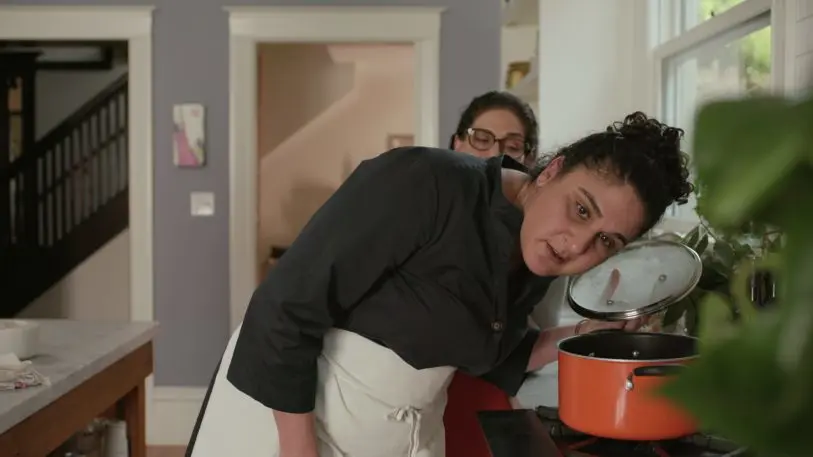
Netflix’s food series clearly owe a debt to Bourdain, but it hasn’t exceeded his benchmark. “I think that Netflix had the prescience to buy into the idea that food stories can take many forms, and that is ultimately the main good of the shows that they’ve made,” Meehan adds.
As Nosrat says, in the past, shows “were always about being for everyone–or everyone white and middle class. They were meant to have broad appeal.” By contrast, Netflix “isn’t solely looking at the aggregate. What they’re looking at is something within that whole,” says Zero Point Zero’s Collins. The phrase that Netflix (and its producers) bandy about is “taste clusters,” a set of thriving and interacting demographic subgroups that latch onto a certain program. If you ever dig into the Netflix interface to see a show described as “quirky” or “feel-good,” that’s directionally the targeting Netflix is pursuing. “They’re honoring smaller, but no less important audiences,” Collins explains.
It’s one of the only tangible explanations I’ve been given for understanding how Netflix is able to use its data to take risks that other networks likely wouldn’t.
The other comes when I press Nosrat to share some element of what makes working with Netflix distinctive. “They are so committed to diversity,” she says. “You go in there, and just the people who work there are so diverse–they represent all parts of everything, it’s amazing. I have never seen a corporation like that before.” Both Bajaria and Nishimura are women of color, for example, and they are the VPs making the big production decisions. “It’s built from the top down,” says Nosrat. “They’ve never wanted me to be anything but myself.” (Netflix’s most recent diversity numbers report that creative and corporate is 60% female, 52% white, and its leadership is 47% female and 61% white.)
Now that Netflix has developed model shows that work for it, the service does risk falling into the same trap as everyone else who’s ever succeeded in food television. Whether it’s Bravo, the Cooking Channel, or even PBS, Collins says the message is, “We do this kind of programming,” meaning, to sell an idea, “it’s going to [have to] fit into the brand of that network.” The tension for Netflix comes from not conflating its current mandate to have something for everyone with its corporate imperative to be everything to everyone. Most creators working with Netflix don’t seem too concerned just yet—indeed, they feel they’re most creative when working with it—but the possibility lingers. As the director Morgan Neville tells me, he remembers pitching the company on Ugly Delicious and asking if they were even interested in taking another food show. “I think their reaction was, ‘We don’t want two; we want them all.'”
[Photo Illustration: Samir Abady; The Final Table and Salt Fat Acid Heat: Adam Rose/Netflix; Parts Unknown, Ugly Delicious, and Nailed It!: courtesy of Netflix]
Recognize your brand’s excellence by applying to this year’s Brands That Matter Awards before the early-rate deadline, May 3.
